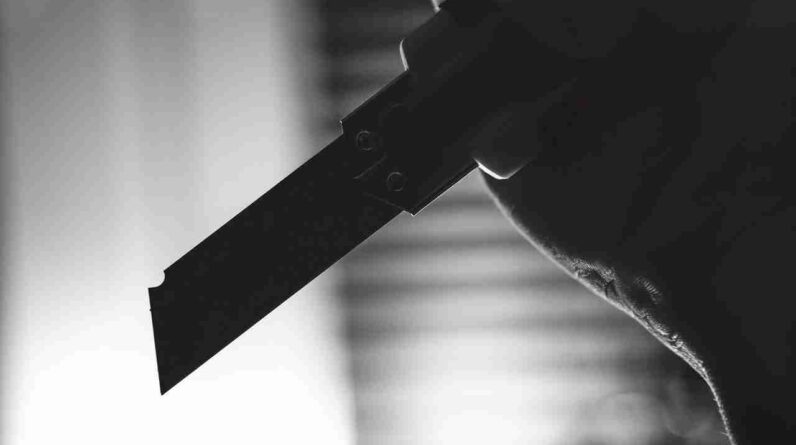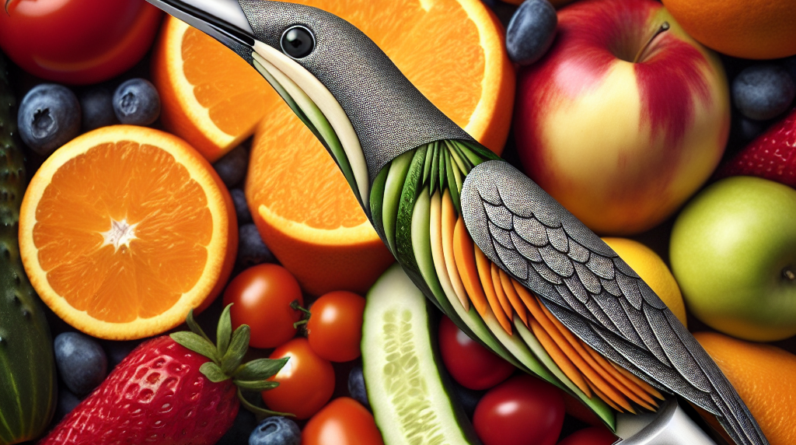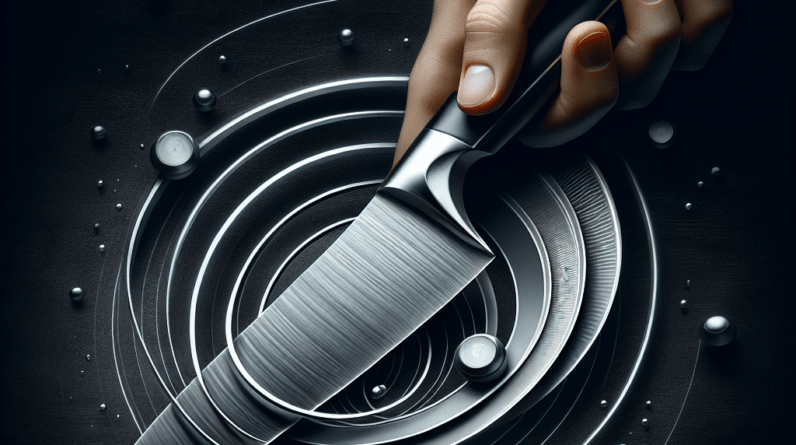We’ve all been there – struggling to chop, slice, or dice with a dull kitchen knife. But how do we know when it’s finally time to bid farewell to our trusted culinary companion? In this article, we uncover the signs that indicate it’s time to part ways with your beloved knife and explore how to choose a suitable replacement. So, say goodbye to those frustrating kitchen moments and say hello to a sharper, more efficient cooking experience!
Visible wear and tear
Nicks and chips on the blade
Over time, our trusty kitchen knives can start showing visible signs of wear and tear. One of the most common issues we may come across is nicks and chips on the blade. These imperfections not only affect the knife’s performance but also pose a risk to our safety. Nicks and chips can lead to uneven cuts and make it more difficult to slice through food smoothly. If we notice any significant damage to the blade, it’s a clear sign that it’s time to consider replacing our knife.
Bent or misaligned blade
Another telltale sign that our kitchen knife may have reached the end of its lifespan is a bent or misaligned blade. This can occur due to accidental mishandling or constant use over time. When a blade becomes bent, it loses its sharpness and can even pose a danger while cutting. A misaligned blade can make it challenging to achieve precise cuts and may require more effort to use effectively. If we find ourselves struggling with a blade that no longer sits straight, it’s a strong indication that it’s time to invest in a new knife.
Loose handle
The handle of a knife plays a vital role in providing stability and control during cutting and slicing tasks. However, over time, the handle may become loose, compromising our grip and increasing the risk of accidents. If we notice excessive movement or wobbling in the handle when using our knife, it’s a clear indication that the handle has started deteriorating. To ensure our safety in the kitchen, it’s crucial to replace a knife with a loose handle.
Difficulty in cutting and slicing
Blade no longer holds sharpness
One of the most frustrating signs that it’s time to replace a kitchen knife is when the blade no longer holds its sharpness. A dull blade can make simple cutting tasks a struggle and lead to uneven cuts, resulting in less desirable cooking outcomes. If we find ourselves putting more effort into slicing through food or if the blade consistently fails to provide clean, precise cuts, it’s a strong indication that we need a new knife. Maintaining a sharp blade is vital for efficient and enjoyable cooking experiences.
Struggling to cut through food
When our kitchen knife starts to lose its sharpness, we may find ourselves struggling to cut through different types of food. This can be particularly noticeable when dealing with items that require precision, such as slicing vegetables or carving meat. If we feel like we’re using more force than usual or if the knife seems to get stuck in the food, it’s a clear indication that the blade isn’t performing as it should. Investing in a new knife will not only make our cooking tasks easier but also enhance the overall quality of our culinary creations.
Uneven cuts
If we’ve been noticing that our knife is consistently providing uneven cuts, it’s a sign that it’s time for a replacement. Whether it’s due to blade dullness, damage, or misalignment, uneven cuts can negatively impact the presentation and taste of our dishes. The last thing we want is to serve a beautifully prepared meal with unevenly cut ingredients. By investing in a new knife, we can ensure that our cuts are clean, precise, and enhance the overall aesthetic appeal of our cooking.

Increased risk of accidents
Knife slipping or sliding
A knife slipping or sliding during food preparation can be both frustrating and dangerous. When our kitchen knife starts losing its grip or becomes too smooth due to wear and tear, it significantly increases the risk of accidents. If we find ourselves constantly readjusting our grip or struggling to maintain control of the knife while cutting, it’s a strong indication that we should consider replacing our knife. Ensuring our safety in the kitchen should always be a top priority.
Inability to control the knife
As our kitchen knife ages, it may become more difficult to control during cutting and slicing tasks. This lack of control can be a result of multiple factors, such as a loose handle, dull blade, or an unbalanced knife. If we feel like our knife has become unpredictable and requires excessive effort to maneuver, it’s a clear sign that it’s time for an upgrade. The ability to control our knife with ease not only enhances our cooking experience but also minimizes the risk of accidents.
Increased effort required
A resilient kitchen knife should make our food preparation tasks more manageable, requiring minimal effort to achieve desired results. However, as a knife nears the end of its lifespan, we may notice that it requires increasing effort to perform even basic cutting tasks. This can be a challenging and tiresome experience, diminishing the joy of cooking. If our knife is making us put in more effort than necessary, it’s time to consider investing in a new knife that will make our cooking endeavors more enjoyable and effortless.
Rust and corrosion
Appearance of rust spots
If we start noticing rust spots on the blade of our kitchen knife, it’s a clear indicator that the knife has been subjected to moisture or improper storage conditions. Rust not only affects the knife’s appearance but also compromises its functionality. Rust spots can make the blade uneven, creating irregular cutting surfaces and potentially contaminating our food. To ensure food safety and maintain the quality of our knife, it’s essential to replace it if rust becomes a recurring issue.
Pitting on the blade
Pitting refers to the small, rough indentations that can develop on the blade of a knife due to corrosion. When these pits form, they can harbor bacteria, making our knife unhygienic for use. Moreover, pitting affects the knife’s cutting performance, leading to uneven cuts and decreasing its overall effectiveness. If our knife has developed significant pitting, it’s time to retire it and invest in a new blade that provides a cleaner, safer, and more enjoyable cutting experience.
Unpleasant odor or taste in food
The presence of rust or corrosion on a kitchen knife can introduce an unpleasant odor or taste into our food. When rust particles mix with the ingredients we are preparing, they can alter the flavor and even pose potential health risks. If we notice a metallic taste or an off-putting smell in our food after using a particular knife, it’s crucial to address the issue promptly. Replacing the knife is the best course of action to avoid compromising the quality and safety of our culinary creations.

Difficulty in maintenance
Inability to sharpen the blade
Regular sharpening is essential to maintain a kitchen knife’s optimal performance. However, if we find that no amount of sharpening can restore our knife’s sharpness, it’s a clear indication that it’s time for a replacement. Over time, knives can lose their ability to hold a sharp edge due to repeated use, damage, or poor quality. If our knife consistently fails to respond to sharpening efforts, investing in a new one will ensure we have a reliable tool for efficient food preparation.
Handle material deteriorates
The handle of a knife is not only responsible for providing a comfortable grip but also for maintaining structural integrity. If we notice our knife’s handle starting to deteriorate, with cracks, splinters, or loose components, it’s a sign that the knife has reached the end of its lifespan. A deteriorating handle can compromise our grip, making it challenging to control the knife effectively. To avoid accidents and ensure a comfortable cooking experience, replacing the knife is the most suitable solution.
Alignment issues while cleaning
Cleaning our kitchen knives is an essential part of their maintenance routine. However, if we encounter consistent alignment issues while cleaning our knife, such as difficulty joining the blade and handle back together correctly, it may be an indication that the knife has suffered damage or has become worn out. Proper alignment is crucial for a knife’s functionality and overall performance. If cleaning becomes a hassle due to alignment issues, it’s time to bid farewell to our old knife and welcome a new one into our kitchen.
Change in the knife’s weight or balance
Weight imbalance due to damage
A well-balanced knife is a pleasure to use, contributing to efficient and precise cuts. However, if we notice a sudden change in our knife’s weight or balance, it may be a sign of underlying damage. A knife that has lost its balance due to wear and tear or accidental damage can throw off our cutting technique and make the knife less safe to wield. If we find it increasingly challenging to achieve consistent and controlled cuts, it’s time to consider replacing our knife with one that offers better balance and stability.
Handle feels heavier or lighter
When a kitchen knife deteriorates, we may notice a change in the weight of the handle. Over time, handles can absorb moisture or loosen around the tang, leading to an imbalanced weight distribution. If we find that our knife’s handle feels heavier or lighter than before, it can compromise our grip and make it more challenging to control the knife effectively. To ensure our safety and maintain our comfort while cooking, it’s advisable to replace a knife with a handle that provides a balanced weight distribution.
Knife becomes unbalanced
A properly balanced knife ensures precision and control during cutting tasks. However, as a knife ages, it can lose its balance, affecting the way it feels and performs in our hands. An unbalanced knife can make cutting tasks more difficult, require excessive effort, and increase the risk of accidents. If we notice that our knife no longer feels stable or that it tends to tip to one side, it’s time to invest in a new knife that offers proper balance and control.

Changes in your cooking style or needs
Switching to a different type of cuisine
As our cooking preferences evolve, we may find ourselves shifting towards different types of cuisine that require specialized tools and knives. A change in our cooking style or needs can be a valid reason to consider replacing our kitchen knife. For example, if we start exploring Japanese cuisine and require a knife specifically designed for slicing sashimi, it makes sense to invest in a high-quality Japanese knife. Adapting our kitchen tools to match our culinary interests enhances our cooking experience and allows us to explore new flavors and techniques more effectively.
Specialized knives required
Certain cooking tasks may require specialized knives to achieve the best results. For example, if we frequently prepare delicate pastries or bread, investing in a serrated knife or a dedicated bread knife can significantly improve our cutting precision. Similarly, if we frequently work with large cuts of meat, a reliable carving knife becomes essential. Assessing our cooking needs and determining if specialized knives are necessary can help us identify when it’s time to upgrade our kitchen knife collection.
Increased frequency of use
As our passion for cooking grows or our household expands, we may find ourselves using our kitchen knife more frequently than before. Increased usage can accelerate the wear and tear on a knife and diminish its overall longevity. If we notice that our knife is struggling to keep up with our increased cooking demands or if it’s showing signs of deterioration sooner than expected, it may be time to search for a more durable, high-quality knife that can withstand our cooking frequency.
End of the knife’s lifespan
Excessive usage over many years
Like any tool, kitchen knives have a lifespan, and excessive usage over the years can gradually wear them down. If we’ve been using the same knife for an extended period and have noticed significant deterioration in its performance, it’s likely reached the end of its lifespan. Continuous use can lead to blade dullness, handle damage, or structural issues that compromise a knife’s effectiveness and safety. It’s wise to retire our loyal, but now tired, knife and invest in a new one that will better serve our culinary needs.
Manufacturer’s recommended lifespan
Many kitchen knives come with a recommended lifespan from the manufacturer. These guidelines are based on the quality of materials, construction, and expected performance. If our knife’s lifespan aligns with the manufacturer’s recommendation, it serves as a reliable indicator that it’s time to consider a replacement. Adhering to these guidelines ensures that we’re using knives that offer optimal performance and safety, while also taking into account any technological advancements or improvements in knife design that may have occurred since our last purchase.
Lack of quality improvement or maintenance
Kitchen knife manufacturers constantly strive to improve the quality, durability, and performance of their products. If we’ve been using the same knife for a significant period and there haven’t been any notable improvements in knife technology or design, it may be time to explore better options. Additionally, if our knife has not been properly maintained over time, such as regular sharpening and cleaning, its lifespan may have been significantly shortened. Recognizing the lack of quality improvement or maintenance in our current knife is an important step in deciding to replace it.
Availability of better options
Advancements in knife design
The world of kitchen knives is constantly evolving, with manufacturers introducing new and innovative designs to enhance our cooking experience. From improved blade materials to ergonomic handle designs, these advancements offer us better options to choose from. If we’ve been using the same knife for a long time and notice exciting new knife designs that align with our preferences and needs, it’s a clear indication that it’s time to consider upgrading. Embracing these new options can enhance our cooking skills and make our time in the kitchen more enjoyable.
Personal preferences for a different knife
Our personal preferences can change over time, and this includes our preferences for the type of knife we use. Perhaps we’ve discovered a knife style that suits our hand size and grip better, or we’ve developed a preference for a different blade shape that aligns with our cutting techniques. If we find ourselves longing for a different knife to better match our personal preferences, it’s a strong indication that we should explore the availability of better options. Our preferences play a significant role in our cooking experience, and investing in a knife that truly resonates with us can make a world of difference.
New technology or materials
Technology and materials used in knife manufacturing continue to evolve. New advancements bring the introduction of stronger blade alloys, improved handle materials, and innovative ergonomic designs. If we become aware of knives incorporating new technology or materials that offer enhanced performance, durability, or ease of use, it may be time to consider replacing our current knife. Embracing the benefits of these new advancements can elevate our culinary skills and ensure that we’re utilizing the best tools available in our kitchen.
Bent or damaged tip
Inability to pierce or make precise cuts
The tip of a kitchen knife is crucial for tasks that require delicate maneuvers, such as piercing, scoring, or making precise cuts. However, if the tip becomes bent or damaged, it can severely impact our knife’s functionality. A bent or damaged tip may struggle to pierce through tough skins or perform intricate cutting tasks accurately. If we find ourselves frustrated by the inability to achieve precise cuts or struggling to pierce ingredients effectively, it’s an indication that it’s time to invest in a new knife with an intact, reliable tip.
Accidental damage to the tip
Accidents happen, and a kitchen knife’s tip is particularly vulnerable to unintentional damage. Whether it’s a result of a mishap during food preparation or an unfortunate encounter with a hard surface, a damaged tip can significantly affect a knife’s performance. If our knife’s tip has been accidentally bent or chipped, it’s important to assess the extent of the damage. Minor damage may be repairable, but if the tip is severely compromised, it’s advisable to replace the knife to ensure we have a reliable tool for our culinary adventures.
Weakening of the entire blade
A bent or damaged tip not only affects the function of the tip itself but can also impact the overall integrity of the blade. When the tip weakens, it can compromise the stability and strength of the entire knife. A weakened blade is more susceptible to further damage or even breakage during regular use, posing a significant safety risk. To avoid potential accidents and ensure we have a strong and reliable knife, it’s essential to address any damage to the tip promptly by replacing the knife if necessary.
In conclusion, recognizing when it’s time to replace a kitchen knife is essential for maintaining efficient and safe food preparation. Visible wear and tear, difficulty in cutting and slicing, increased risk of accidents, rust and corrosion, difficulty in maintenance, changes in the knife’s weight or balance, changes in our cooking style or needs, reaching the end of the knife’s lifespan, availability of better options, and a bent or damaged tip are all valid indicators that it’s time to invest in a new knife. By understanding these signs and being mindful of our knife’s performance, we can ensure that our culinary journey remains enjoyable, efficient, and safe.









